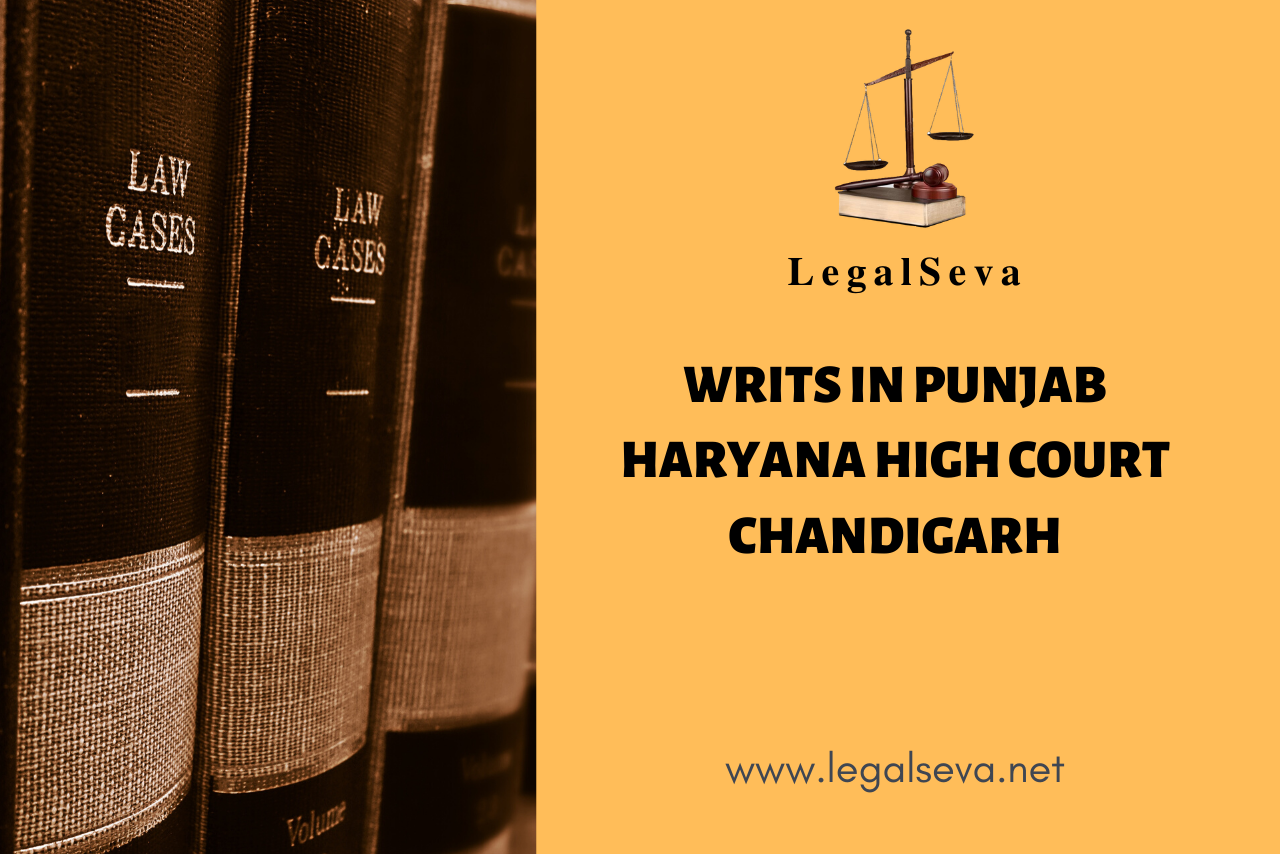Last Updated on May 4, 2020 by Legalseva.net
INTRODUCTION
The Constitution of India had adopted the concept of writ jurisdiction from British Jurisprudence. In which powers to issue writs are available to the king. Our Constitution provides writ jurisdiction to the High Courts and Supreme Court of India under Article 226 and Article 32 of The Constitution of India. As far as the writ jurisdiction is concerned the scope of the writ jurisdiction of High Courts is far wider than the Supreme Court. [1]A right without a remedy is a meaningless formality. It is the remedy which makes a right real. The framers of Indian Constitution did not like to incorporate mere precious obligations. They preferred to incorporate real rights. In England these rights are known asprerogative writs because they were issued not as an ordinary writ of strict right but in exercise ofprerogative powers. Fundamental Rights are contained in part III of the Indian Constitution including the Right to equality, right to live life and liberty. Merely providing for Fundamental Rights is not sufficient it is the outmost essential that these Fundamental Rights are protected and enforced properly. To protect Fundamental Rights the Indian Constitution, under Article 32 and Article 226, provides the right to approach the Supreme Court or The High Court, respectively, to someone whose Fundamental Right has been violated. Any person can either approach High Courts and Supreme Court for issuance of any or all the writs as per facts and circumstances. Basically the purpose of these writs are to safeguard the fundamental rights of common people but even for other rights these writs can be issued.
The Hon’ble Supreme Court also held by a 13 Bench judges in a famous case
of KESHAVANANDA BHARATI v STATE OF KERELA the writ jurisdiction of High Courts and Supreme Court also known as powers of judicial review is a basic part of Indian Constitution and cannot be amended by an ordinary amendment or taken away by any legislature even by the amendment in the Constitution.
Also Read- Criminal Matters in High Court Chandigarh
RIGHT TO REMEDY UNDER ARTICLE 32 IS ITSELF A FUNDAMENTAL RIGHT
The right to seek remedy under Article 32 of the CONSTITUTION OF INDIA is itself a Fundamental Right included under Part-III as Right to Constitutional Remedies. The necessary consequence of its being a fundamental right is that the remedy cannot be taken away by any legislation nor it can be refused by the Court. If the cause action is made out the remedy cannot be denied merely on the ground of that the proper writ has not been prayed off. Court has to ensure that no Fundamental Right is contravened by any statutory or constitutional provision.
WHAT IS A WRIT?
A writ can be a formal written order issued by anybody, executive or judicial, authorised to do so. In times, this body is mostly judicial. Therefore, a writ may be understood as a proper written order issued by a Court having authority to issue such an order, summons, directions, and warrants etc which are all essential part of writs.
Also Read- High Court of Punjab and Haryana at Chandigarh
WHO MAY APPLY ?
Ordinarily any person whose Fundamental Rights has been infringed or hreatened is entitled to apply for relief under Article 226 in The High Court. Where a person or a class of persons to whom legal injury is caused by the reason of the violation of the Fundamental Right or any other legal Right is unable to approach to the Court for judicial redress on account of poverty or disability or socially or economically disadvantageous position any member of the public acting BONA FIDE can move to the Court for relief under the Article 226 of the Constitution of India. Article 226 makes it clear that the High Court has the power throughout the territories in relation to which it exercises jurisdiction, to issue to any person or authority including in appropriate case4sv any Government within whose territories directions, orders or writs for the Enforcement of the Fundamental Right and also any other purpose. This power to issue direction , order or writs to any Government, authority or person may also be exercised by the High Court under exercising jurisdiction in relation to the territories within which the cause of action arises for exercise of such power, notwithstanding that the seat of such Government or authority or the residence of such person is not within those territories.
Also Read- Legal Representation or Legal Notice?
WHAT ARE THE KINDS OF WRITS?
Articles 32 and 226 specifically provide for five types of writs. These writs are issued in several circumstances and have different implications. They are:
Habeas Corpus
‘Habeas Corpus’ means “to have a body of”. This writ is employed to release someone who has been unlawfully detained or imprisoned. By virtue of this writ, the Court directs the person so detained to be brought before it to look at the legality of his detention. If the Court decides that the detention was unlawful which is against the law then it directs the person to be released immediately. The remedy can be sought by the prisoner or other person coming to prisoner’s aid. It has been an important legal instrument for safeguarding an individual freedom against arbitrary State and Private action due to inaction of the state. [2]The Indian Judiciary has dispensed with the traditional doctrine of LOCUS STANDI (RIGHT TO BE HEARD) so that if a detained person is not in a position to file an petition, it can be moved on his behalf by other person and thereby scope of habeas relief has expanded in recent times by actions of Indian Judiciary. It is true that the writ of Habeas Corpus is very important jurisdiction in which the High Courts are called upon to protect the individual liberties of the citizens and thus it prevents illegal detention by the authority of the state.
Also Read- WRITS IN INDIA: MEANING AND TYPES
Mandamus
‘Mandamus’ means ‘we command’ The writ of Mandamus is a judicial remedy in the form of an order from the High Court or the Supreme Court to any Government , State Authority, subordinate courts , corporation or public authorityto do some specific act which that body is obliged under law to do and which is in the nature of public duty. It cannot be issued against a personal individual or body, the President or Governors of the respective States or against a working Chief Justices. A writ petition seeking mandamus must be filed by the one that has an interest within the performance of the duty by the general public authority. A mandamus is available against any public authority including administrative and local bodies and it would lie to any person who is under a duty imposed by statute or the common law.
Quo Warranto
‘Quo Warranto’ means ‘by what warrant’. Through this writ, the Court calls upon someone holding a position to point out under what authority he holds that office. If it’s found that the person isn’t entitled to carry that office, he could also be ousted from it. Its objective is to stop someone from holding an office he’s not entitled to therefore preventing usurpation of any position. It can’t be issued with relevance a personal office. The writ of Quo Warranto lies in the following conditions if they are satisfied-
- The office in the question must be a public office.
- The office must be substantive in character.
- The respondent must not be legally qualified to hold the office or remain in the office.
Certiorari
‘Certiorari’ means to ‘certify’. Certiorari could be a curative writ. When the Court is of the opinion that a judicature or a tribunal has passed an order which is beyond its powers or committed a slip-up of law then, through the writ of certiorari, it should transfer the case to itself or quash the order glided by the judicature or tribunal. The basic difference between certiorari and prohibition is that it lies in the fact that the former is filed before the passing of the order by the court and the later can be filed after passing the order/judgment. Higher Courts can issue order to lower courts compelling them to take different actions if the judge of the higher court has reason to believe that the lower court is not acting appropriately.
Prohibition
A writ of ‘prohibition’ is issued by a Court to ban the lower courts, tribunals and other quasi-judicial authorities from doing something beyond their authority [3]it is issued to direct inactivity and thus differs from mandamus which directs activity.There are several reasons why a writ of prohibition might be issued. One reason for the court to issue a writ of prohibition is if it believes that a lower court is acting outside its jurisdiction. When court exceeds their jurisdiction they do not actually have authority over the matter at hand and it must be tried in another court of law in order for the results to have legal standing. Courts usually try to avoid hearing cases which are not in their jurisdiction thus by eliminating any reason to have a writ of prohibition issued to get them to stop handling given cases. Another reason for such writ is a situation in which a court is not operating under the normal rules of procedure.
Also Read- Punjab Haryana High Court Chandigarh
DIFFERENCE BETWEEN ARTICLE 32 AND 226
Article 32 of the Constitution of India guarantees the right to move to the Hon’ble Supreme Court by appropriate proceedings for the enforcement of infringed Fundamental Rights. In the case of infringement the Fundamental Rights, The Right to move Supreme Court is itself a Fundamental Right. It is the duty of the Supreme Court to enforce the Fundamental Right guaranteed under the Constitution.
- The ambit power and jurisdiction of the Supreme Court under Article 32 is confined to enforcement of Fundamental Rights whereas Under Article 226 of the Constitution of India is not itself a Fundamental right . The remedy provided under Article 26 is a discretionary remedy and cannot be claimed as Fundamental right.
- The remedy provided under Article 32 is the remedy for enforcement of Fundamental Right whereas Article 226 empowers the High Court to issues order, directions or writs for the enforcement of Fundamental Right.
- The territorial jurisdiction of the High Court is not wide as Supreme Court.
- If a petition filed under Article 32 is dismissed by the Supreme Court on the merit a subsequent petition under Article 226 would be barred.
Also Read- Service Matter Writs in High Court Chandigarh (Punjab Haryana)
For more info, please contact best top expert Writ High Court Chandigarh Lawyers Advocate (Punjab & Haryana).
This post is written by Upasana Borah.
More on 99888-17966.
[1]https://books.google.co.in/books?id=XfUyDAAAQBAJ&redir_esc=y
[2]https://www.academia.edu/9157760/Jurisdiction_of_Supreme_Court_Of_India


1 thought on “WRITS IN PUNJAB HARYANA HIGH COURT CHANDIGARH”
Comments are closed.